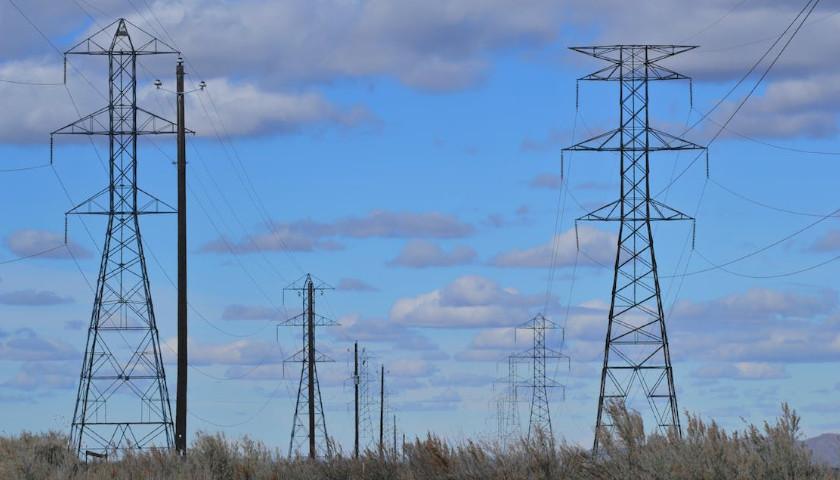by Bonner Russell Cohen
Citing the need for more electricity to continue growing the artificial intelligence (AI) sector and keep the U.S. tech industry ahead of China, former President Donald Trump on Sept. 5 vowed in a second term to issue a “national emergency declaration to achieve a massive increase in domestic energy supply.”
But standing in the way of ramped up domestic energy production is a federal permitting process notorious for its foot-dragging. Some in Congress acknowledge the problem, but their latest effort to rectify the situation risks being overtaken by surging energy demand and troubling geopolitical realities.
Hoping to unravel the reams of red tape that have tied up transportation, energy, and mining projects for years, and in some cases killed them altogether, Sen. Joe Manchin (I-W.Va.) and Sen. John Barasso (R-Wyo.) want their colleagues to approve their “Energy Permitting Reform Act of 2024.” Centralizing decision-making on power transmission nationwide is the centerpiece of their legislation. Accordingly, it would bolster the Federal Energy Regulatory Commission’s (FERC) authority to approve interstate transmission lines and require interregional transmission planning.
 In a bid to satisfy as many conflicting interests as possible, the bill establishes deadlines for filing lawsuits over energy and mining projects, and sets requirements for onshore and offshore oil, gas, coal and renewable energy leasing and permitting. It also includes provisions on hard-rock mining and sets a 90-day deadline for the secretary of Energy to grant or deny liquified natural gas (LNG) export applications, according to a summary of the legislation.
In a bid to satisfy as many conflicting interests as possible, the bill establishes deadlines for filing lawsuits over energy and mining projects, and sets requirements for onshore and offshore oil, gas, coal and renewable energy leasing and permitting. It also includes provisions on hard-rock mining and sets a 90-day deadline for the secretary of Energy to grant or deny liquified natural gas (LNG) export applications, according to a summary of the legislation.
The bill is generally supported by such groups as the American Clean Power Association, the Solar Energy Industries Association, the American Council on Renewable Energy, Advanced Energy United, and Americans for a Clean Energy Grid, UtilityDive reported.
Many of the wind, solar and transmission-line projects favored by these groups have encountered the same permitting and litigation delays that have bedeviled fossil-fuel producers. On the other hand, the Sierra Club opposes the measure, finding it insufficiently hostile to fossil fuels and saying it “would open up federal lands and waters to more leasing and drilling and unnecessarily rush reviews of natural gas export projects…”
Aside from all the problems inherent in vesting so much authority in one federal bureaucracy, FERC, to handle the nation’s power transmission challenges, such conventional approaches are no match for the transformative developments already roiling America’s electricity supply. While politicians, along with some less-than-savvy investors, have been content to pour wads of public and private cash into the green energy transition, artificial intelligence (AI) is rapidly upending the world elites thought they knew.
Energy-hungry data centers — there are currently over 2,700 in the United States with hundreds more planned — need electricity 24/7/365 if they are to meet the extraordinary demands of AI. The amount of electricity AI-driven data centers require cannot be produced by intermittent solar and wind power transmitted hundreds if not thousands of miles from the sunny Southwest or the gusty plains of the Upper Midwest. Big Tech’s demands on an already shaky grid far outstrip anything politically fashionable solar panels and wind turbines can ever deliver. To their chagrin, the Big Four data center developers — Amazon Web Services, Google, Microsoft and Beta — now find themselves increasingly dependent on the very fossil fuels and — where available — nuclear power they have been so quick to dismiss over the years.
But given the choice of meeting their lofty Net-Zero carbon emissions goals or cashing in on AI’s financial promise, Big Tech will choose the second option. And the stakes go well beyond the companies’ respective bottom lines. Data centers are essential to AI, and AI is essential to national security. If the U.S. is not the global leader in AI, China (along with its junior partner, Russia) will be.
“AI can be the foundation of a new industrial base it would be wise for our country to embrace,” Sam Altman, co-founder and CEO of OpenAI, recently wrote in the Washington Post.
Ceding the United States’ current lead in AI to China would be a blow from which America’s industrial base, and thus its military preparedness, would be hard pressed to recover. Data centers, powered by a steady flow of reliable energy, are now key assets in the perilous world of 21st century geopolitics.
As neighbors in the communities in which they are located, data centers are a mixed blessing. They generate enormous revenues to local governments but can be seen by nearby residents as disruptive to their community. The non-descript but noisy buildings comprising data centers house thousands of computer servers processing the data that make the internet, cloud computing and AI possible. They not only require gobs of power but also plenty of water used to lower temperatures.
Together with government-driven efforts to put more EVs on the road, data centers further complicate the challenges facing the already stressed electric grid. These developments are beyond the reach of the horse-trading that goes into Capitol Hill legislation. What is clear, however, is that the vaunted green-energy transformation will never be equal to the task before us.
– – –
Bonner Russell Cohen, Ph. D., is a senior policy analyst with the Committee for a Constructive Tomorrow (CFACT).





